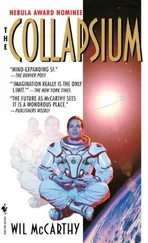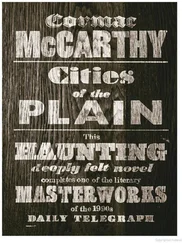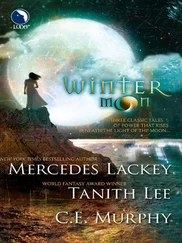Conrad uttered a curse that even Barnardean spacers considered obscene. Fortunately, Daniel didn’t hear it, and everyone else in the building was shouting and running around, or trying to call out on the Nescog. Or fleeing toward the fax machine, yes, but already the early arrivals were turning back, fleeing elsewhere.
“The Nescog is down!” someone said.
And that was impossible. It would take a huge calamity to bring down the entire network—even the shock fronts of a supernova would take hours to reach the solar system’s remotest corners—and the fact that these people were all still standing here put sharp upper limits on the violence of what might’ve happened. But you could cut off a planet’s access to the network. Conrad had done this himself, during the Children’s Revolt, and he imagined a sparsely populated world like Luna could be serviced by as little as a few hundred hardware gates. How difficult would it be to smash them all?
“Window,” he said to the wall in front of him.
“Not authorized,” the wall replied.
“Excuse me?”
The wall cleared its imaginary throat. “Regrettably, sir, I’m observing disaster protocol, and am required to maintain a superreflective exterior. There could be hazardous radiation outside, or bioinformatic viruses, or visual imagery which could damage you psychologically. I’m incapable of allowing any harm to come to you, sir.”
“Override,” Conrad told it impatiently.
“Not authorized, sir. I can be overriden only by badged emergency personnel, government officials, and members of the royal family.”
“Yes?” Conrad snapped. “Really? Because I’m the chief architect of this fuffing planet, and I need to look outside.”
“I have no way to confirm that, sir.” The wall now sounded uneasy, and willing perhaps to hedge its bets. “Would you settle for a low-resolution cartoon, assembled from sensors on my exterior surface?”
Conrad waved a hand. “Whatever. Yes. Show me what’s out there.”
Without further ado, the wall produced a hollie of the buildings outside, rendering them as hypersmooth, two-color fantasies. Broken walls were shown as stylized zigzags, and the shards of wellglass littering the streets were little isosceles triangles of translucent white. The worst of it, though, were the piles of bodies—the people who’d been caught out in the street and either explosively decompressed or taken down by flying debris. These, the cartoon represented as bright yellow, pillowy-looking figures with oversized heads, big black eyespots, and grinning half-circle mouths. A big heap of happy dolls, indeed.
But moving among the dolls were other happy figures—these in gray—and one very tall, very thin humanoid that seemed to be put together from marshmallows and sealed in a wrapper of black cellophane. That one was the happiest of all, with a toothy grin taking up the vast majority of its polished white cranium.
“Tactical analysis,” Conrad demanded of Bell Daniel, forgetting for a moment that they were both construction workers.
But the wall thought he was talking to it , and annotated its cartoon with little tags saying TO BE REVIVED for the dead yellow dolls, and POSSIBLE ACTIVIST over the gray smiling figures. For Death, it seemed at a loss, and marked the figure with a message saying only, INCONSISTENT READINGS.
And to his credit, Bell Daniel replied as well, saying, “Um, well, it looks like they’re searching house-to-house.”
And indeed, the gray dolls had a tool or weapon of some sort—shown in the cartoon as a smiling padded fish—which opened perfectly rectangular doorways in the buildings, from which little cartoon swirls would emanate. The air escaping, the people inside suffocating. And when the swirls had stopped, a platoon of the gray smiling dolls would prance inside, only to prance back out again a minute or two later to join the rest of their darling little army.
“They’re probably looking for you,” Daniel said to Conrad. And Conrad felt a sinking feeling, because the same thought had just occurred to him.
“On Sealillia, too,” he said. “And probably in Cork, where my family lives.”
“Are they backed up? Your family?” Daniel wanted to know.
But instead of replying, Conrad turned and ran for the fax machine, shouting, “Space suits! Battle armor! Weapons! Now!”
And while he had no official standing as yet, and the building truly didn’t know him from any other Tom, Dick, or Herzog in the Queendom—nor, for that matter, from the gray fuzzy attackers outside—it must be said (a) that the building was not stupid, (b) that every society recognizes a right to self-defense, and (c) that Conrad’s authority-figure routine was neither self-conscious nor marked by any physiological signs of deception or duplicity. So it is not entirely surprising that when the Fatalists broke through the building’s exterior, exposing its interior to the harsh Lunar vacuum, they were met not by corpses but by a dozen armed men and women and the withering rain of six tripod-mounted wireguns.
It was not easy to kill a Fatalist ghoul in full battle armor, but a combination of surprise and determination can accomplish much, and Conrad emerged from the building a minute later with five of his people still alive.
“Are you all right?” he asked Bell Daniel.
“I surely am,” the man replied angrily. “You will find, sir, that my way is like the toilet: when people go in it, they feel better, but when they get in it, they’re shat on and flushed.”
“You’d’ve made a good sailor,” Conrad said to him, on the strength of that comment alone. And together they launched the counterattack.
“This cannot be,” said the King of Sol.
Altogether, in four separate attacks, the Fatalists had killed eleven hundred instantiations of eight hundred and twenty different people. More tellingly, they had coupled the assault with antimatter attacks on two of the great, secret archives where long-term human backups were stored. The aim was clear: to catch key people while they were dead , and delete their archival patterns. In this they were unsuccessful, since all of the deceased persons had either living instantiations elsewhere in the Queendom, or backups stored in other facilities. But in some cases, years of precious memory were lost, irretrievably.
Damn. Bruno had adored the Queendom’s long peace, and hated to see it shattered like this.
“In a way it’s reassuring,” said Cheng Shiao of the Royal Constabulary, “for with its death toll of zero, this is still the most successful Fatalist attack in Queendom history. If they pre-position their assets for these offensives—and surely they must—then we may suspect that this one has cost them dearly, and bought them nothing.”
“Except a lot of fear and suffering,” Conrad Mursk said, clutching at his wife’s hand and glancing meaningfully at Bruno. Or rather, at the contingency copy of Bruno that had been instantiated at the start of this crisis. The “real” me is still on Maplesphere, Bruno thought, blissfully undisturbed. Or perhaps Mursk was staring at the Palace Guards, which (Bruno had already figured out) made him uneasy.
Well, he’d best get used to it. Before the dust had settled, even before the last of the shooting had stopped, Bruno had ordered these two Barnardeans hauled into protective custody at Constabulary headquarters on Tongatapu.
“If they’re not safe there ,” Tamra had remarked, “then no person is safe anywhere in the universe.”
She would later have cause to regret those words, but for the moment they seemed true enough, so that Mursk, in Bruno’s opinion, most likely felt confined rather than endangered. A choice of two evils.
Читать дальше












